Hudson Museum Scavenger Hunt: Penobscot Candy Basket
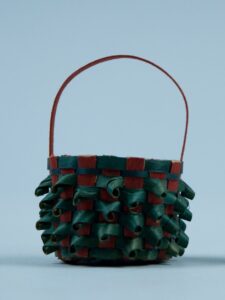
What are they used for?
Baskets are traditionally used for gathering, storing, and transporting items.
Wabanaki families made hundreds of thousands of baskets for use in the home, fields, and woods.
Who made them?
Among the Wabanaki (Passamaquoddy, Penobscot, Maliseet, and Mi’kmaq) basketmaking is learned by doing. Children are taught by their elders how to make baskets. One of the first baskets that they make are candy baskets, which use the scraps left from the larger baskets made by the elders.
Income from basketmaking was crucial to Wabanaki communities in the 19th and 20th centuries.
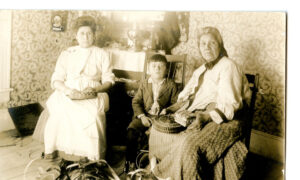
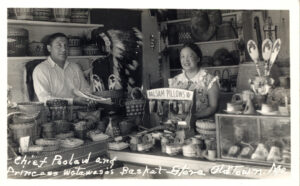
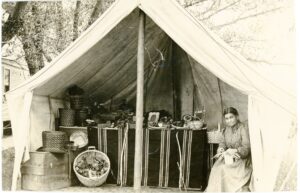
Today, baskets have become art. Wabanaki artists are recognized nationally for their artistry.
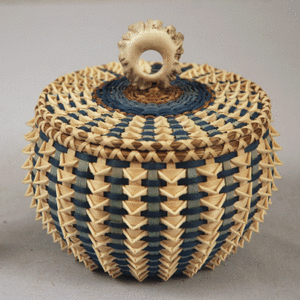
What are they made of?
Wabanaki baskets are made of brown ash and sweetgrass–materials that are found in our state.
Splints are often colored with dyes made of berries, tree bark, and roots and later with aniline dyes. Popular colors changed over time: indigo, red, and yellow were popular around the time of the Civil War, olive green and brown were popular during the Victorian era, and in the 1930s bright colors were popular.
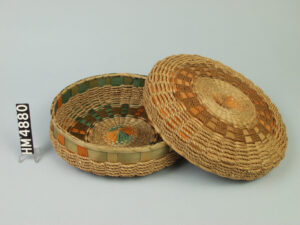
Splint gauges are used to create uniform width splints.
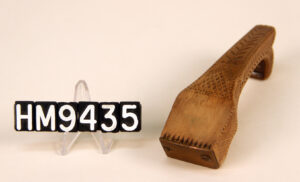
To Find the Next Code
Face the basket, and then head to the right. Look for a sharp tool that you could use to carve wood to make a basket. You can scan the QR code when you find it, or click here to continue.
